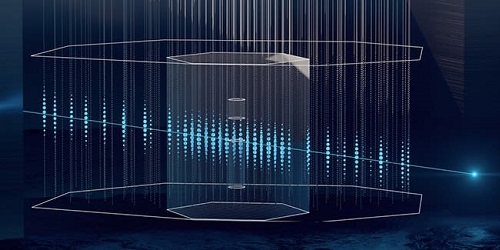Flavor Profiling the Highest-Energy Neutrinos
In the 1960s, researchers predicted the existence of astrophysical neutrinos with energies above 1017 eV. Scientists have yet to observe such ultrahigh-energy neutrinos, but they hope that forthcoming detectors could finally uncover these particles. Now Alan Coleman of Uppsala University in Sweden and his colleagues have demonstrated how these detectors might distinguish between the three neutrino flavors: electron, muon, and tau [1]. This capability is desirable because identifying the flavor composition of ultrahigh-energy cosmic neutrinos could shed light on both the production mechanism and the fundamental physics of these elusive particles.
The forthcoming detectors will monitor nanosecond-long radio-wave pulses created when ultrahigh-energy neutrinos interact with ice. In their theoretical study, Coleman and his colleagues show how researchers could measure the flavor composition of these neutrinos using two complementary detection channels. The first channel identifies electron neutrinos via the elongated shapes of the radio pulses they produce. The second channel identifies muon and tau neutrinos via the muon and tau leptons—heavy cousins of the electron—generated when these neutrinos interact with ice.
Coleman and his colleagues considered the future in-ice optical and radio-wave detector IceCube-Gen2, a planned extension to the IceCube Neutrino Observatory in Antarctica. They predict that their method should allow this detector to measure the flavor composition of ultrahigh-energy neutrinos, assuming the flux of these particles meets a minimum value. Moreover, the determined composition should be precise enough for scientists to distinguish between three possible ultrahigh-energy-neutrino production mechanisms. The team says that these measurements could even uncover “new neutrino physics acting at ultrahigh energies.”
–Ryan Wilkinson
Ryan Wilkinson is a Corresponding Editor for Physics Magazine based in Durham, UK.
References
- A. Coleman et al., “Flavor composition of ultrahigh-energy cosmic neutrinos: Measurement forecasts for in-ice radio-based EeV neutrino telescopes,” Phys. Rev. D 110, 023044 (2024).




